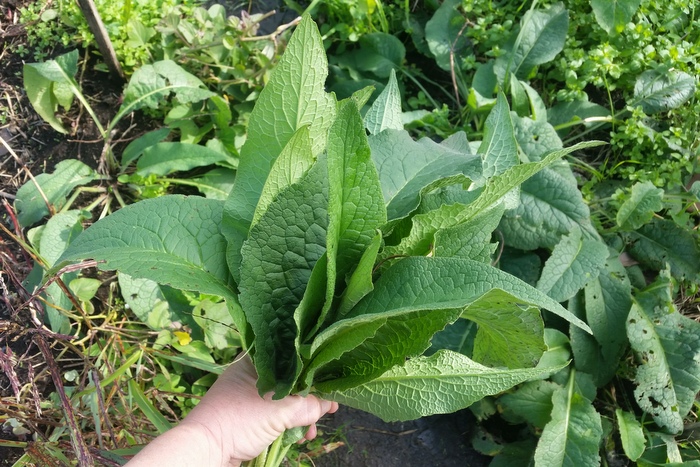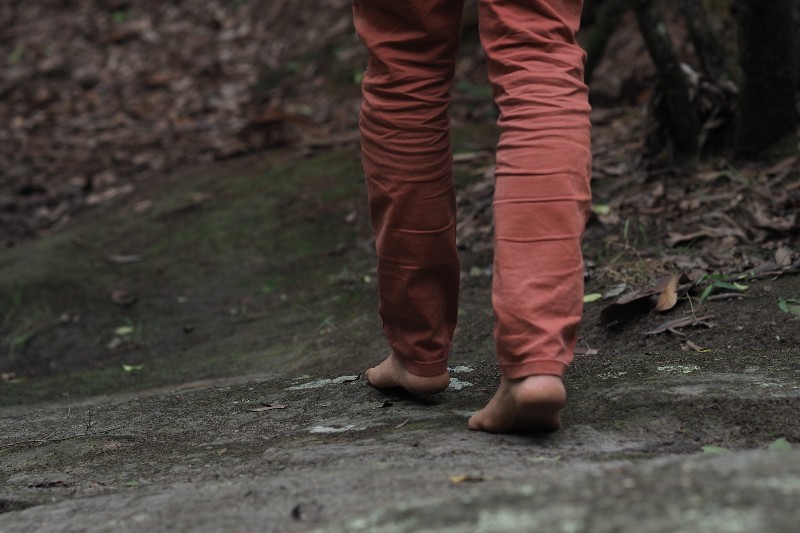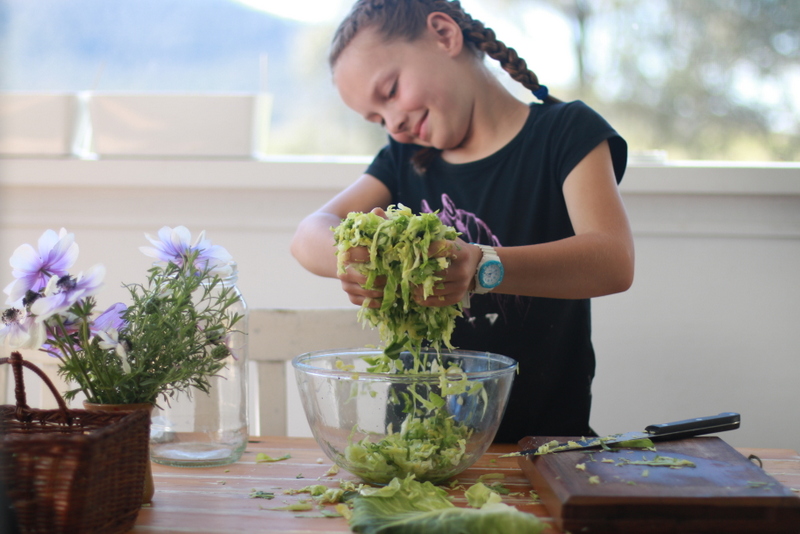I’m feeling very grateful for the healing power of plants. I’ve been using comfrey leaves to soothe a sore back and have been surprised by how well it works. Comfrey is not only a useful medicinal herb – it can also be used in the garden to improve and fertilise soil. My love for comfrey is stronger than ever and I’m determined to grow as much of this useful plant as I can.
Comfrey has been used as a medicinal plant for centuries.
It can reduce pain and inflammation and speed up mending of bruises, sprains and broken bones.
Knowing of its anti-inflammatory properties, I decided to try a comfrey poultice on my sore lower back.
A poultice is an easy way to apply healing herbs to the skin. Basically, it’s a paste of whatever herbs or healing substance you want to use, typically wrapped in a piece of cloth – such as gauze, muslin or other open-weave cotton fabric – and placed on the skin.
I was surprised by just how much the comfrey poultice reduced my back pain. I wore a poultice full-time (changing morning and night) until I ran out of comfrey. The back pain returned.
Intrigued by its effectiveness, I did some further reading and discovered there’s solid research confirming the therapeutic effectiveness of comfrey. Of particular interest to me is its effectiveness in relieving lower back pain.
So I’ve decided to increase the amount of comfrey in my garden. Thankfully it’s easy to grow.
How to propagate comfrey
Common comfrey (Symphytum officinale) can be grown by seed, root cuttings and division, whereas Russian comfrey (Symphytum uplandicum) is sterile (does not produce viable seed) and can only be grown from cuttings or division.
Given that a small piece of root is all that is needed to create a new comfrey plant, it’s easy to quickly propagate a large number.
How to use comfrey in your garden
Once you have comfrey established in your garden you can use it in a myriad of ways.
Comfrey’s strong roots draw up nutrients from the soil. You can chop and drop the mineral-rich leaves and use them as a mulch. Leaves can be added to compost as a conditioner. Or you can make a nutritious tea (for plants) by brewing leaves in a bucket of water for a couple of weeks.
Is comfrey safe to eat?
There’s a lot of debate regarding the safety of ingesting comfrey.
The debate is due to the presence of small quantities of a toxic alkaloid pyrrolizidine which can have a cumulative effect on the liver.
Common comfrey has negligible quantities of the toxic alkaloid and has long been safely consumed, particularly as a medicinal tea.
Russian comfrey, a hybrid bred in the 1950s largely for its ability to improve soils, has higher levels of pyrrolizidine.
Given that it appears Russian comfrey is often sold as common comfrey, I’m playing it safe and don’t consume home-grown comfrey. I supposedly bought common comfrey root cuttings from a reputable nursery. But given that I haven’t seen a seed set in the three years I’ve been growing it, I’m not convinced I wasn’t sold the Russian variety.
Whichever comfrey you have, scatter it liberally around your garden and use young leaves topically and you can’t go wrong. Comfrey is one amazing herb.
Originally published in the Newcastle Herald Monday 29th June 2015.



